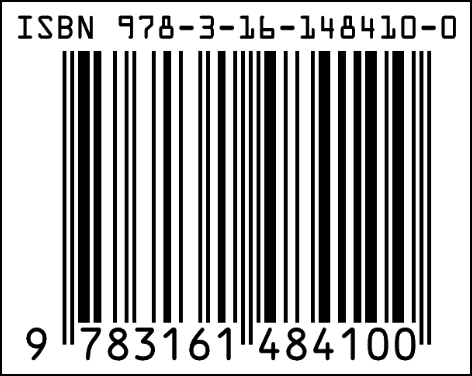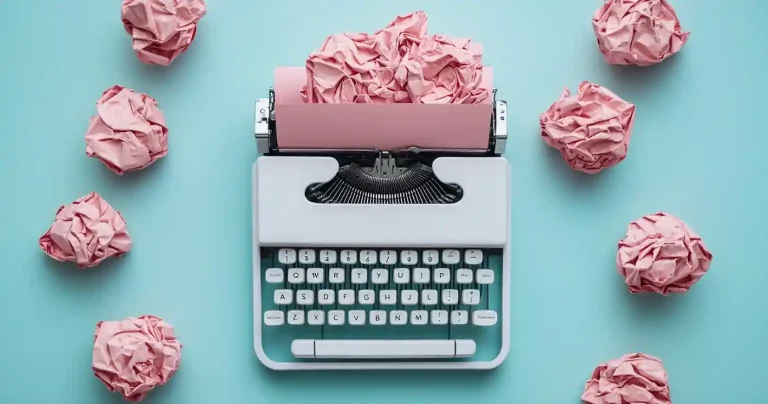We’ve packed this guide with insights from bestselling indie author Rachel Aaron—who built her career on smart, successful self-publishing—and advice shared in real-time from authors workshopping their books in the The WriteTreat Zoom sessions. This isn’t just a guide—it’s the playbook real authors are using right now.
Let’s talk about a dream: You’ve written a book, and it’s brilliant. You know it, your mom knows it, even your dog knows it (they wag their tail every time you read aloud). But now you’re staring at the massive wall of “how do I actually get this thing out into the world?”
Here’s the good news: self-publishing is here to save the day. No more waiting years for a traditional publisher to “discover” you like a talent scout in a coffee shop. With self-publishing, you’re in charge. Think Beyoncé-level creative control.
The even better news? Tons of famous authors started where you are. Ever heard of E.L. James? Yeah, Fifty Shades of Grey was originally self-published. Hugh Howey’s Wool? Same story. They took control, and so can you.
This guide? It’s your map to joining their ranks—minus the awkward fanfic beginnings (unless that’s your thing).
Step 1: What is Self-Publishing (and Is It Right for You?)
Self-publishing sounds fancy, but it’s really simple. It means you’re the boss. You write the book, prep it, publish it, and sell it—all without a traditional publisher breathing down your neck about “market trends.”
When I first learned about self-publishing, I thought, “Wait, I can skip the rejection letters and go straight to publishing?” It felt like finding the specials menu at a restaurant—game-changing.
Why is it a game-changer? First, it’s faster. While traditional publishers take forever (seriously, longer than waiting for George R.R. Martin to finish The Winds of Winter), self-publishing can have your book live in weeks—or days if you’re a wizard.
Second, you keep more money. Sure, you’ve got to invest upfront, but when those royalties roll in, you’re not splitting them with a dozen people who didn’t even read your book.
But let’s be real. It’s not for everyone. Self-publishing works best for writers who like being in charge. If you’re the type who needs someone else to plan your entire vacation itinerary, traditional publishing might be more your vibe.
Think of it like baking your own bread. It’s satisfying, customizable, and totally yours. But it also takes effort. Are you ready to knead that dough?
“Self-publishing is empowering, but it’s also a ton of responsibility. You’re the publisher, the marketer, the project manager. But for authors like me, that control is everything.” –Rachel Aaron, The WriteTreat Zoom sessions
Step 2: Pick Your Perfect Publishing Path
Alright, you’re in. Now comes the big question: ebooks, print books, or both? Each has its perks, like choosing between Netflix or Hulu. (Pro tip: you don’t have to pick just one.)
Ebooks are fast, cheap to produce, and wildly popular. Especially for genres like romance, sci-fi, and thriller. Seriously, if your book has a vampire, spaceship, or secret agent, it’ll do great in ebook form.
Print books, on the other hand, are classics. Nothing beats the smell of fresh ink and flipping through pages. Plus, your mom gets to proudly display it on the coffee table when guests visit.
The golden ticket? Do both. Ebooks reach the tech-savvy crowd, and print books are perfect for readers who still haunt bookstores. Win-win.
Oh, and don’t forget audiobooks. They’re growing faster than a Marvel movie release schedule. If you can swing it, consider adding one. People love multitasking their way through a good story.
This is just the beginning. Ready to dig deeper? We’ve got plenty more ground to cover in the next steps!
Step 3: Polish Your Manuscript Like a Pro
So, you’ve written “The End.” Congrats! That’s huge. But hold on—don’t hit publish yet. Your manuscript isn’t ready for the world. It’s like a rough diamond. Gorgeous, but it needs polishing.
Here’s a harsh truth: even the best writers have typos. J.K. Rowling probably misspelled “Quidditch” at least once. And readers? They will notice. Nothing breaks immersion faster than a “their” where a “there” should be.
Start with a Self-Edit (Yes, You Gotta Do It)
Your first stop? You. Take a break (seriously, step away for a week or two) and then read your book with fresh eyes. You’ll catch things you missed while you were in the writing trenches.
Look for:
- Plot holes big enough to swallow a freight train.
- Characters who disappear without explanation (where did Cousin Bob go?).
- Sentences that sound clunkier than a bad karaoke night.
Pro tip: Read it aloud. You’ll catch awkward phrasing faster than your favorite celebrity gets canceled on Twitter.
Hire an Editor: Because Your Mom Isn’t Enough
Your mom might love your book. She might even think it’s the next Pride and Prejudice. But she’s not an editor. You need a pro—someone who isn’t afraid to tell you that Chapter 5 is a total snooze.
“My editor made me rewrite a third of one of my novels—and it hurt. But she was right. Editors aren’t there to coddle you. They’re there to help you make the best version of your book.” –Rachel Aaron, The WriteTreat Zoom sessions
There are three main types of editing:
1. Developmental Editing:
Big-picture stuff like plot, pacing, and structure. Think of it as a personal trainer for your story.
2. Copyediting:
Fixes grammar, sentence structure, and other technical bits. This is the Marie Kondo phase—it sparks joy by tidying up.
3. Proofreading:
The final polish. This catches typos, missing punctuation, and that one rogue double space.
Can’t afford an editor? Check out editing apps like Grammarly or ProWritingAid. Always review their suggestions before approving changes. They’re not perfect, but they’re a start.
Beta Readers: Your Book’s Test Audience
Before your book hits the big stage, let a few trusted readers take it for a test drive. These are your beta readers—like a focus group for books. They’ll tell you if the ending made them cry (in a good way) or if your plot twist fell flat.
Pick people who love your genre. Don’t give your epic fantasy to someone who only reads thrillers. It’s like asking a dog person to rate your cat photos.
“Beta readers helped me see where readers got confused or bored—and it was never where I expected. That kind of feedback is gold before launch.” –Rachel Aaron, The WriteTreat Zoom sessions
Step 4: Craft a Cover That Sells (Yes, People Judge Books by Covers)
You know that saying, “Don’t judge a book by its cover?” Total nonsense. Everyone judges books by their covers. It’s the first thing readers see, so make it count.
A great book cover does two things:
- Screams your genre. Romance covers thrive on emotion—maybe couples, maybe a rose. Thrillers? Dark shadows or lone figures running. Fantasy? Epic vibes—mythical creatures, magical objects, or breathtaking landscapes.
- Looks professional. Nothing says “amateur” like Comic Sans or poorly cropped images.
To see examples of great covers, here’s a book cover art gallery I curated for Rocket Expansion.
DIY vs. Hiring a Designer
If you’re artistically inclined, tools like Canva or BookBrush can help. But be honest—does your design look as good as a bestseller? If not, hire a pro. You can find affordable designers on sites like Fiverr or Reedsy.
I’d also highly recommend Stuart Bache as a cover designer. He created a stunning dystopian sci-fi cover for a writer in my WriteTreat group, and it looked every bit as professional as any bestseller, whether traditional or indie.
“Your cover is a promise to your reader. It should say, ‘This is the kind of story you’ll get.’ And if it doesn’t scream your genre from across the bookstore—or screen—you’re leaving sales on the table.” –Rachel Aaron, The WriteTreat Zoom sessions
Think of your cover like dressing your book for prom. You want it to be the belle of the bookshelf.
Study the Competition
Browse Amazon and study the top covers in your genre. Notice the fonts, colors, and layouts they use. Your goal isn’t to copy but to fit in while standing out. It’s like picking an outfit for a party—you want to match the vibe without being a clone.
Your book’s looking pretty sharp now, huh? But we’re just getting started. Up next: the nitty-gritty of ISBNs, formatting, and hitting that big green “publish” button.
Step 5: The Magic of ISBNs and Copyright
Okay, time to talk about ISBNs and copyright. Don’t roll your eyes yet. This part might not sound as exciting as designing your cover or hitting “publish,” but it’s crucial. Think of it as the paperwork that makes your book official.
“The business stuff might not be sexy, but it’s what turns your writing hobby into a writing career. Protect your work, own your ISBNs, and treat your books like assets.” –Rachel Aaron, The WriteTreat Zoom sessions
Let’s dive in.
What’s an ISBN, and Why Do You Need One?
ISBN stands for International Standard Book Number. Fancy, right? It’s that 13-digit number on the back of every book, nestled near the barcode. It’s basically your book’s social security number. Without it, bookstores and libraries won’t touch your masterpiece.

Here’s the thing: if you’re only publishing on Amazon, they’ll give you a free ISBN. But there’s a catch—it’s like borrowing your friend’s Netflix account. It works, but it’s technically not yours. Want full control? Buy your own ISBN.
In the U.S., head to Bowker. In the U.K., Nielsen’s your go-to. Prices can sting a bit, but hey, it’s an investment in your author career. Plus, you only need one per edition (ebook, paperback, hardcover).
Copyright: Protect Your Baby
Let’s be clear—your work is automatically copyrighted the moment you write it. Yep, even that first messy draft with plot holes big enough for a ship to sail through.
But if you’re worried about someone stealing your vampire-detective saga, you can register it for extra protection. In the U.S., visit the U.S. Copyright Office. In the U.K., the Intellectual Property Office is your best bet. It’s not expensive, and it gives you peace of mind.
Oh, and don’t fall for those “poor man’s copyright” hacks, like mailing your manuscript to yourself. That’s about as effective as sending a love letter to Taylor Swift and hoping for a reply.
Step 6: Formatting: Making Your Book Look Amazing
Now comes the fun part: making your book look like, well, a book. Formatting is all about giving your readers a smooth ride. No weird margins, no tiny fonts, no random line breaks in the middle of a sentence.
Ebook vs. Print Formatting
Formatting for ebooks is different from print. Ebooks are like water—they flow to fit any device. Print books, on the other hand, are more rigid. They need precise margins, page numbers, and spacing.
If this sounds overwhelming, don’t worry. There are tools to help:
- Vellum: Easy, beautiful formatting for Mac users.
- Reedsy: Free and beginner-friendly.
- Scrivener: Great for writing and formatting in one place.
If you’re feeling fancy, you can hire a pro. They’ll handle all the fiddly bits while you sip coffee and imagine your name on the bestseller list.
Fonts, Spacing, and All the Details
When it comes to fonts, keep it simple. Nobody wants to read your epic fantasy in Comic Sans. Go for classics like Garamond or Times New Roman. They’re like the little black dress of typography—timeless and elegant.
For spacing, aim for readability. Double-spacing is great for drafts, but for your final book, stick to 1.15 or single-spaced. It’s easier on the eyes and makes your book look polished.
Test It Out
Before hitting publish, test your formatting. Upload your ebook file to an e-reader and flip through it. Print a proof copy of your paperback. Check for any weirdness, like pages sticking together or text running off the page.
Think of it as a dress rehearsal for your book. You want everything perfect before opening night.
Now your book is looking sharp and ready to shine. Next up: the big moment—hitting publish and sharing your story with the world. Stay tuned!
Step 7: Publish and Hit That Big Green Button
This is it. The moment you’ve been dreaming about. Your book is polished, formatted, and ready to rock. Now all you have to do is hit publish.
But before you do, let’s walk through this carefully. Think of this as the book version of skydiving—check your parachute before you jump.
Uploading Your Book: Step-by-Step
Every self-publishing platform has its quirks, but the process is pretty straightforward. Let’s use Amazon KDP as our example, because, let’s be real, it’s the Big Kahuna of self-publishing.
- Create Your Account: Easy peasy. If you’ve ever signed up for Netflix, you’ve got this.
- Upload Your Manuscript: This is where all that editing and formatting pays off. Double-check you’re uploading the right file (no one wants to accidentally publish their grocery list).
- Add Your Book Cover: Remember that gorgeous cover you worked so hard on? Upload it here. Make sure it’s high-resolution—blurry covers scream amateur hour.
- Fill Out the Details: Title, author name, keywords, and categories. Pro tip: Choose categories wisely. You want your book to stand out, not drown in a sea of 10,000 other thrillers.
- Set Your Price: More on this in the next step, but for now, think competitive, not greedy.
- Preview Your Book: Amazon lets you see how your book will look on different devices. Check it. Then check it again.
Once everything looks good, hit that shiny “Publish” button. And just like that, your book is live.
What Happens Next?
Amazon doesn’t send confetti, but it does give you a status update: “In Review.” This usually takes about 72 hours. Use this time to celebrate. Order pizza. Watch a feel-good movie (Julie & Julia, anyone?).
When your book goes live, you’ll get an email. Congratulations—you’re officially a published author!
Step 8: Getting Your Book to Readers (aka Distribution)
Publishing your book is just the start. Now it’s time to make sure it gets into readers’ hands. Or onto their Kindles. Or into their Audible library. You get the idea.
Ebook Distribution: Wide vs. Amazon Exclusive
If you’re publishing an ebook, you’ve got two main options:
- Amazon KDP Select (Exclusive): By enrolling in KDP Select, your ebook can only be sold on Amazon. The perk? Access to Kindle Unlimited and a higher royalty rate for certain regions.
- Going Wide: Distribute your ebook across multiple platforms like Apple Books, Barnes & Noble, and Kobo. It’s like spreading your book love far and wide.
Which is better? That depends. If your genre does well on Kindle Unlimited (like romance or sci-fi), exclusivity might be your jam. If you want to reach as many readers as possible, go wide.
Print Books: Print-on-Demand is Your BFF
For print books, print-on-demand (POD) services like Amazon’s KDP and IngramSpark are lifesavers. No need to fill your garage with 500 unsold copies. With POD, books are printed as they’re ordered.
Amazon’s POD is perfect for beginners. IngramSpark gives you access to bookstores and libraries. If you’re feeling fancy, use both.
Getting Your Book in Stores
Dreaming of seeing your book on a bookstore shelf? It’s not impossible, but it takes some work. Most stores prefer traditionally published books, but a great pitch and strong sales data can change their minds.
Tip: Start local. Indie bookstores love supporting local authors. Walk in, introduce yourself, and bring a copy of your book. Bonus points if you buy something while you’re there (supporting indies goes both ways).
Your book is officially out there! But we’re not done yet. Pricing and long-term strategies are up next. Let’s keep going!
Step 9: Pricing Your Masterpiece
Let’s talk money. You’ve poured your heart, soul, and probably way too many late-night snacks into your book. Now it’s time to figure out how much to charge for it.
Pricing isn’t just about slapping on a number. It’s a strategy. Too high, and readers will skip past your book like it’s a $20 avocado toast. Too low, and they might think your book is the literary version of gas station sushi.
Let’s find that sweet spot.
Research, Research, Research
Start by checking out similar books in your genre. Go to Amazon, type in a few keywords, and see what other authors are charging. Notice any patterns?
Romance ebooks often hover around $2.99-$4.99. Thrillers? Maybe $3.99-$5.99. Nonfiction tends to skew higher because, well, people love paying for life advice.
Print books are a bit trickier. A paperback might range from $9.99 to $17.99, depending on genre and page count. Remember, printing costs factor in here, so don’t price it too low unless you want to pay readers to buy your book.
Ebook Pricing: Play it Smart
Ebooks are where things get fun. Amazon offers two royalty tiers:
- 35% Royalty: For books priced between $0.99 and $2.98 or over $9.99.
- 70% Royalty: For books priced between $2.99 and $9.99.
Most indie authors aim for the 70% sweet spot. It’s like picking the express lane at the grocery store—it just makes sense.
Consider offering a launch price. Starting at $0.99 or $1.99 can help you attract early readers and boost your book’s rankings. After a few weeks, raise it to your target price. It’s like an early-bird special, but for your book.
Print Book Pricing: Crunch the Numbers
With print books, you need to account for printing and distribution costs. Amazon’s KDP will show you the minimum price you need to break even. Aim for at least $2-$5 profit per sale.
Want to sell your paperback in bookstores? Factor in discounts for retailers (usually 40-55%). It’s like offering a friends-and-family discount, except you don’t actually know the bookstore owners.
Bundles, Box Sets, and Bonuses
Got more than one book? Bundle them! Readers love value deals. Selling a trilogy as a box set for $9.99 can feel like a steal compared to buying each book individually.
You can also offer bonuses. Include an exclusive chapter, author Q&A, or even a book club guide. It’s like adding fries to the combo meal—it makes everything better.
Experiment and Adapt
The best part of self-publishing? You’re in control. If sales are slow, tweak your price. Run a discount for a week. Try a free ebook promo to attract new readers. It’s all about experimenting.
Remember, even J.K. Rowling didn’t price Harry Potter perfectly from day one. (Okay, maybe she did, but you get the point.)
Step 10: Learn, Adapt, and Publish Again
Now that your book is live and priced like a pro, it’s time to think about the long game. Self-publishing isn’t just about one book. It’s about building a career, one story at a time.
Learn from Reviews
Your first reviews will feel like a rollercoaster. Some will make you want to frame them. Others? Well, let’s just say not everyone “got” your genius. That’s okay.
Use constructive feedback to improve your next book. Ignore the trolls. (Yes, every author gets them, even Stephen King.)
Keep Writing
“Don’t get stuck perfecting one book forever. Every book you publish is a lesson—and the next one will be better. That’s how careers are built.” –Rachel Aaron, The WriteTreat Zoom sessions
The best way to grow your audience is to write more books. Readers who love one book will want more. Think of your favorite series—did you stop at just one? Of course not.
Whether it’s a sequel or something completely new, keep that momentum going. Your readers are waitin
Celebrate Your Wins
Every sale, every review, every email from a fan—it’s a win. Celebrate it. You’ve done something amazing. You’re a published author. Let that sink in.
And when you’re ready, start the process again. Because the world needs your stories, and self-publishing is your ticket to sharing them.
That’s it! Your ultimate guide to self-publishing is complete. Ready to start your journey? Your readers (and future fans) are out there waiting.








